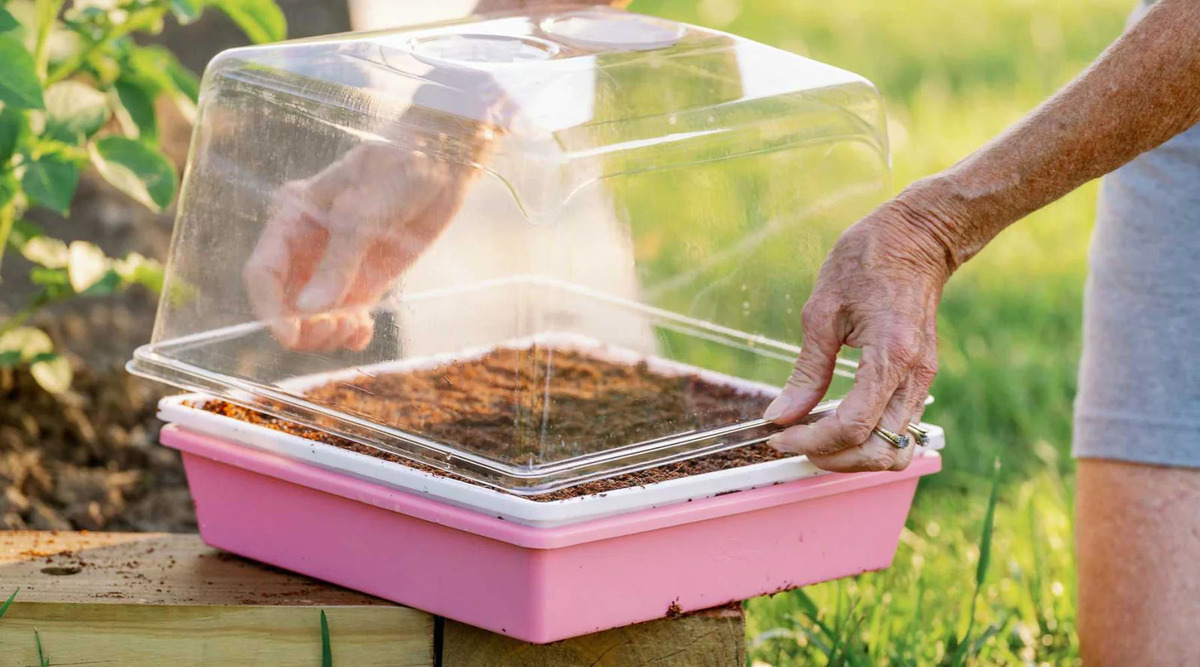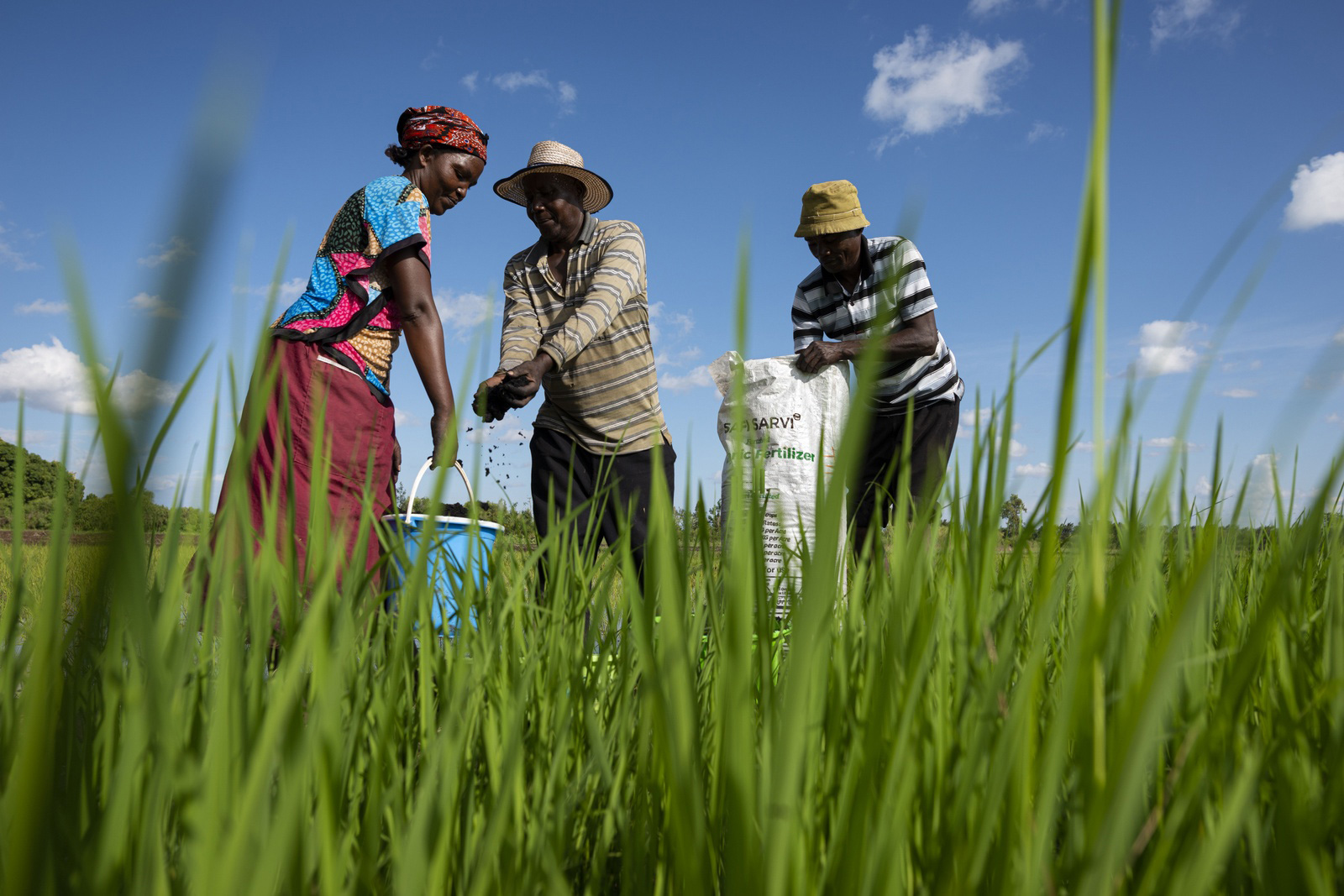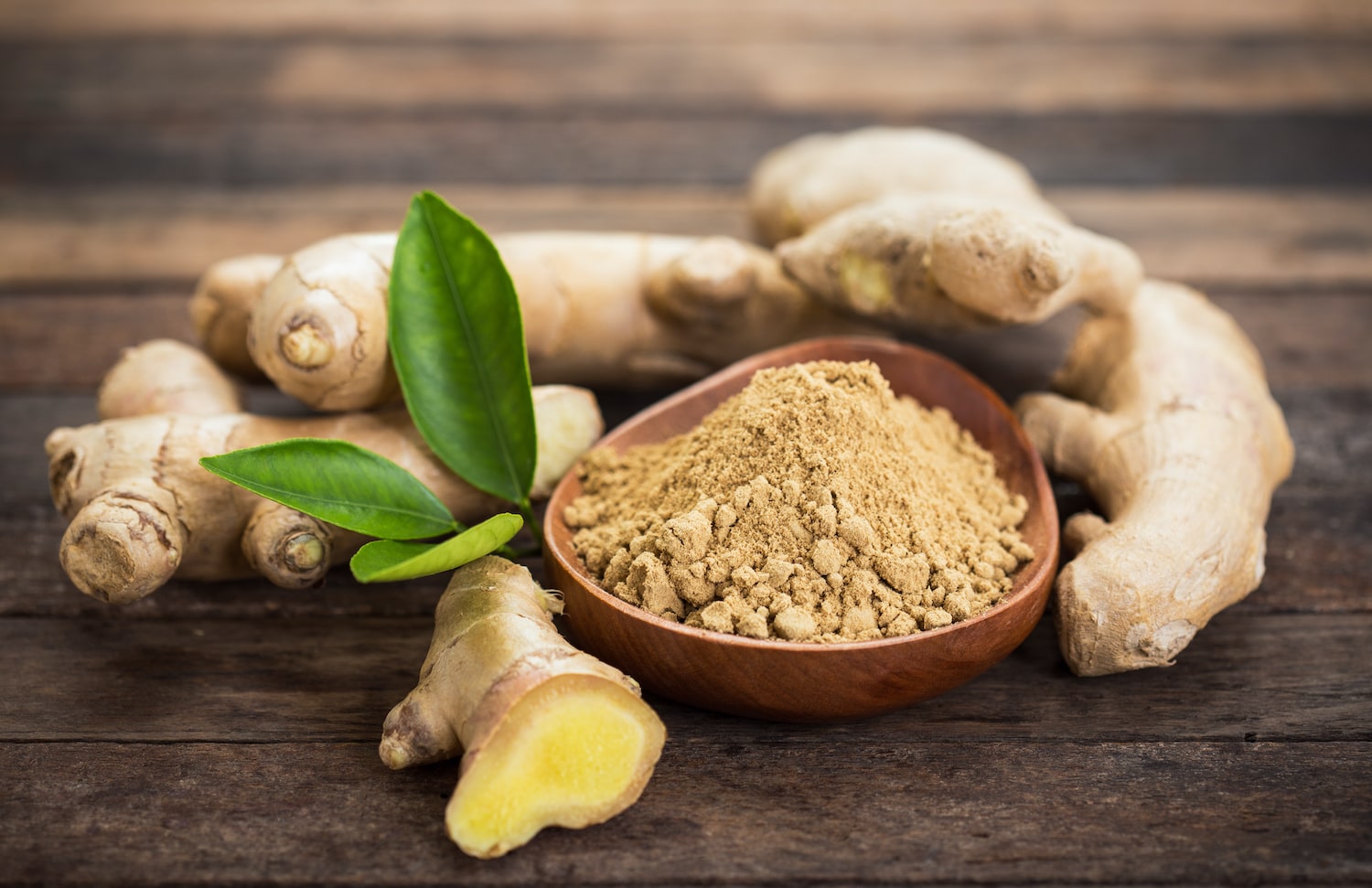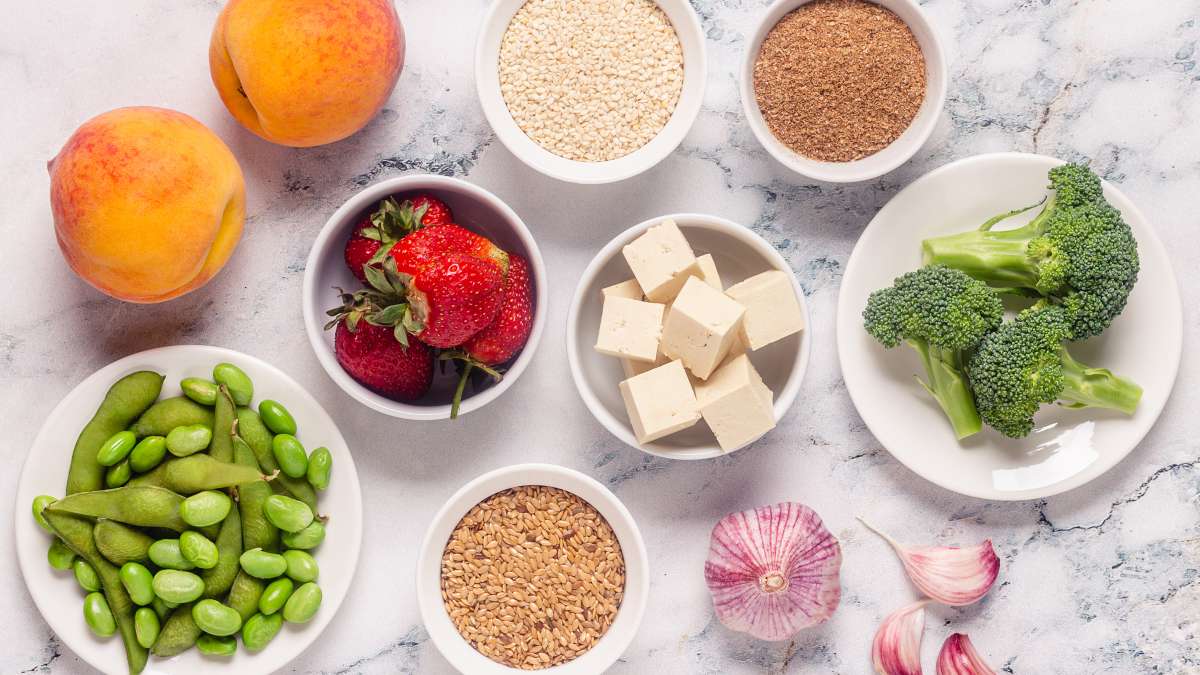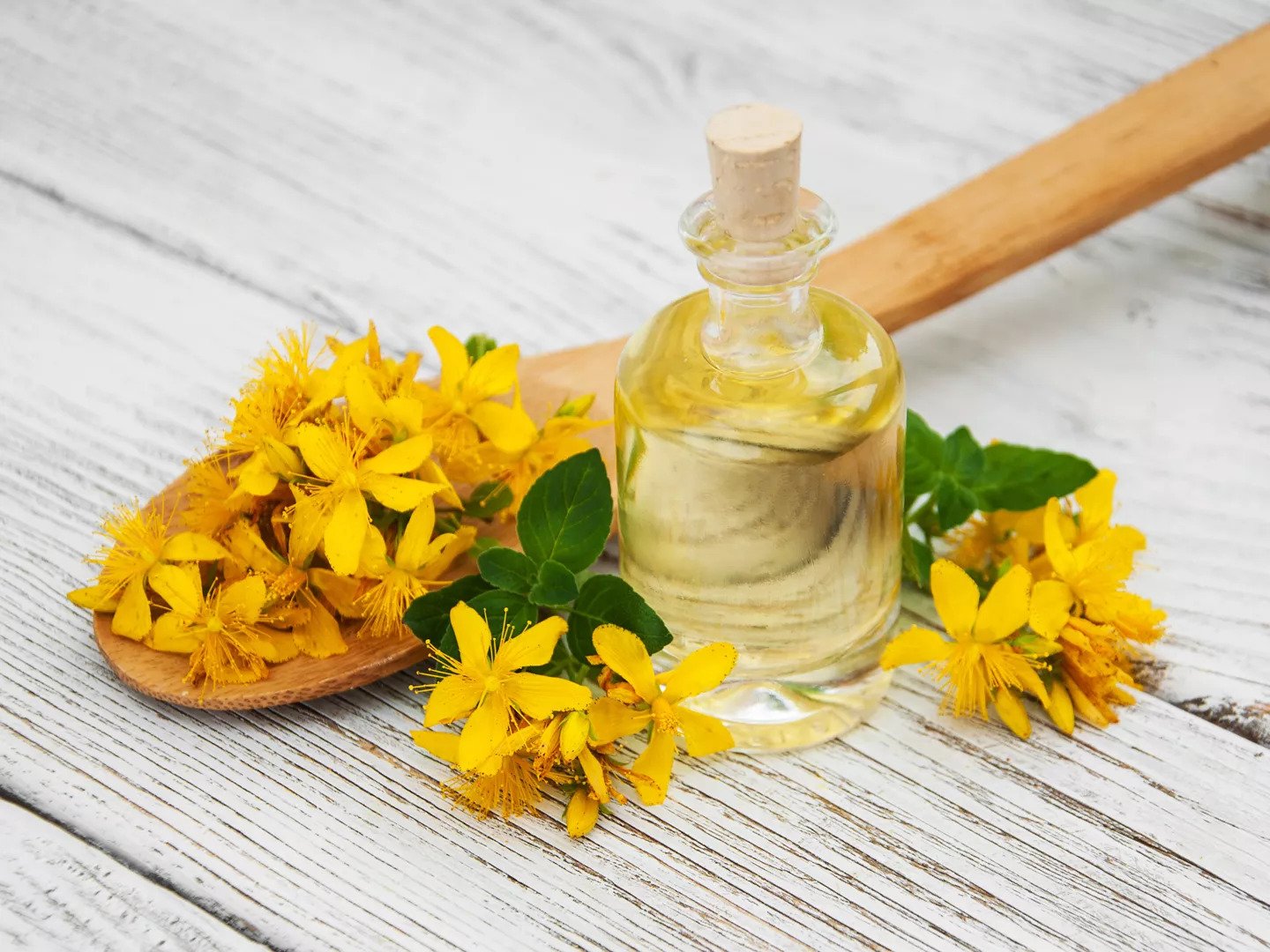Home>Gardening Tips and Tricks>Eco-Friendly Gardening>How To Increase Humidity In A Greenhouse
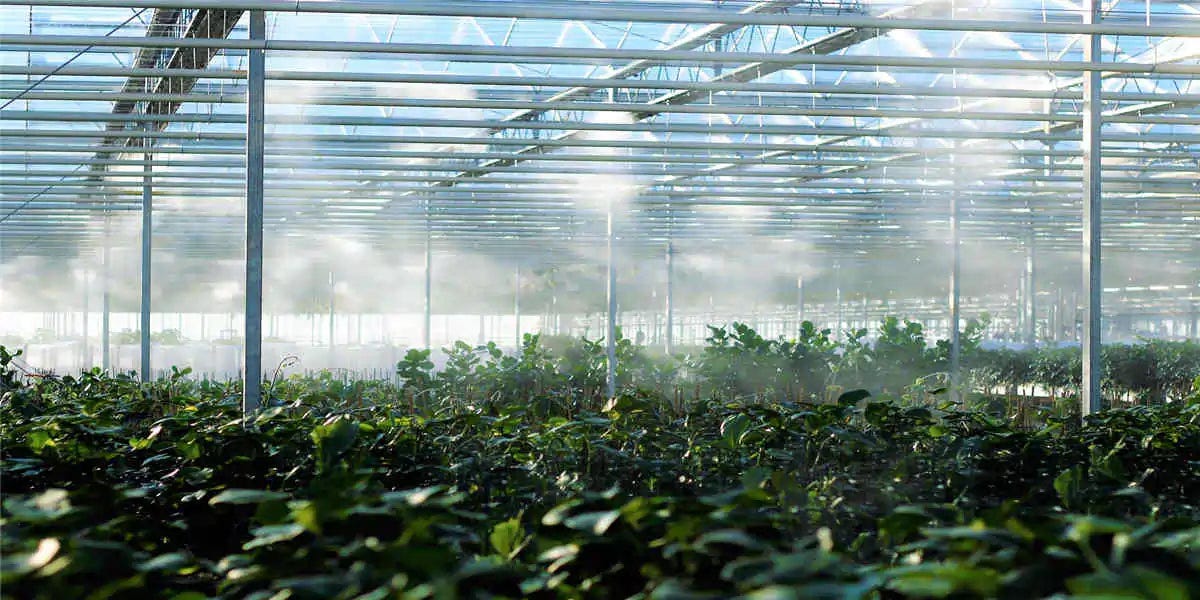

Eco-Friendly Gardening
How To Increase Humidity In A Greenhouse
Modified: January 22, 2024
Learn eco-friendly gardening techniques to increase humidity in your greenhouse. Find out how to create the perfect environment for your plants with these tips and tricks.
(Many of the links in this article redirect to a specific reviewed product. Your purchase of these products through affiliate links helps to generate commission for Chicagolandgardening.com, at no extra cost. Learn more)
Table of Contents
- Introduction
- The Importance of Humidity in a Greenhouse
- Factors Affecting Humidity Levels in a Greenhouse
- Monitoring Humidity Levels
- Natural Ways to Increase Humidity in a Greenhouse
- Using Water Sources to Increase Humidity
- Using Humidifiers in a Greenhouse
- Mist Systems for Humidity Control
- Ventilation and Humidity Regulation in a Greenhouse
- Humidity Management Techniques for Specific Plants
- Conclusion
Introduction
Welcome to the world of eco-friendly gardening, where sustainability and environmental consciousness meet the art of cultivating beautiful gardens. In this article, we will explore the fascinating topic of increasing humidity in a greenhouse, a crucial aspect of creating an ideal growing environment for your plants.
A greenhouse provides a controlled environment for plants, shielding them from harsh weather conditions and offering optimal growing conditions. One essential factor in maintaining a healthy greenhouse ecosystem is humidity. Humidity refers to the amount of moisture present in the air, and it plays a vital role in the growth and development of plants.
Why is humidity important in a greenhouse? Well, plants naturally release moisture through a process called transpiration. When the air is too dry, plants can lose water too quickly, leading to wilting, stunted growth, and even plant death. On the other hand, excessively high humidity can create the perfect breeding ground for pests and diseases. Therefore, achieving and maintaining the right level of humidity is crucial for the health and productivity of your greenhouse plants.
In this comprehensive guide, we will discuss the factors that affect humidity levels in a greenhouse, as well as various techniques to increase humidity naturally. From utilizing water sources to the use of humidifiers and mist systems, we will explore effective strategies to create an optimal humidity environment. Additionally, we will delve into the importance of ventilation and how it can be used in conjunction with humidity regulation.
Moreover, we will delve into specific humidity management techniques for different types of plants, as each species has its own unique requirements. Whether you are growing tropical plants, succulents, or vegetables, we will provide you with practical tips to ensure your plants thrive in the ideal humidity conditions.
If you are ready to dive into the world of eco-friendly gardening and learn how to increase humidity in your greenhouse, let’s explore the following sections. By implementing these techniques and understanding the needs of your plants, you will create an optimal growing environment and embrace the beauty of sustainable gardening.
The Importance of Humidity in a Greenhouse
Humidity plays a crucial role in the success of a greenhouse garden. Understanding the importance of humidity and its impact on plants is key to creating an optimal growing environment. Let’s explore why humidity is essential in a greenhouse.
First and foremost, humidity affects the process of transpiration in plants. Transpiration is the movement of water from the plant’s roots to the leaves, where it evaporates into the air. This process helps plants absorb nutrients and minerals from the soil. When the air is dry, transpiration occurs more rapidly, causing plants to lose moisture too quickly. This can lead to wilting and dehydration, negatively impacting their growth and overall health.
On the other hand, when the air is excessively humid, transpiration slows down. This can result in reduced nutrient uptake and hinder the plant’s ability to photosynthesize effectively. Furthermore, high humidity levels create the perfect breeding ground for pests and diseases, posing a threat to the plants’ well-being.
In addition to transpiration, humidity also affects the regulation of temperature in a greenhouse. Moist air holds heat more effectively than dry air, providing a more stable and consistent temperature for your plants. This is particularly important during cold or dry seasons when the greenhouse environment may become too arid for certain plants.
Humidity is also essential in promoting efficient nutrient absorption. When the air is humid, plants can take up water more easily through their roots. This allows them to absorb nutrients more effectively, leading to healthier and more robust growth.
Furthermore, maintaining the right humidity level aids in the prevention of plant stress. Stress factors such as excessive heat, drought, or low humidity can significantly impact plant health and productivity. By ensuring adequate humidity levels, you can reduce stress levels and create an environment that encourages strong, resilient plants.
Ultimately, understanding the importance of humidity in a greenhouse allows us to create a balanced and favorable environment for plants to thrive. By providing the right amount of moisture in the air, we can support transpiration, nutrient absorption, temperature regulation, and overall plant health.
Now that we have established the significance of humidity in a greenhouse, let’s explore the various factors that can affect humidity levels. Understanding these factors will help us effectively manage and monitor humidity in our greenhouses.
Factors Affecting Humidity Levels in a Greenhouse
Several factors can influence the humidity levels inside a greenhouse. Understanding and managing these factors will help you create the ideal growing environment for your plants. Let’s explore the key factors that affect humidity levels in a greenhouse:
1. Temperature: Temperature and humidity are closely interconnected. As temperature rises, the air can hold more moisture, leading to lower relative humidity. Conversely, cooler temperatures reduce the air’s moisture-holding capacity, resulting in higher relative humidity. Maintaining a balanced temperature is crucial for controlling humidity levels in a greenhouse.
2. Ventilation: Proper ventilation is essential for maintaining the right humidity levels. Good air circulation helps prevent the buildup of excess moisture, which can lead to high humidity levels. By allowing fresh air to circulate, you can promote evaporation and reduce humidity, creating a healthier environment for your plants.
3. Watering Practices: The way you water your plants can impact humidity levels. Overwatering can lead to excessive humidity, as the excess water evaporates into the air. Similarly, underwatering can result in dry conditions and low humidity. Finding the right balance in watering practices is crucial to maintaining optimal humidity levels.
4. Type of Plants: Different plant species have varying moisture requirements. Some plants prefer higher humidity levels, while others thrive in drier conditions. It is important to group plants with similar humidity needs together, allowing you to create specific microclimates within your greenhouse.
5. Humidity Source: The presence of water sources, such as ponds, tanks, or wet surfaces, can contribute to higher humidity levels. These water sources evaporate and release moisture into the air, increasing humidity. Monitoring and managing the proximity and size of water sources is essential for maintaining desired humidity levels.
6. Seasonal Changes: Humidity levels can vary throughout the year due to seasonal changes. During the summer, humidity tends to be higher, while in winter, it tends to be lower. Monitoring and adjusting humidity levels according to seasonal changes is crucial for providing optimal growing conditions.
By understanding the factors that affect humidity levels, you can implement strategies to manage and control humidity in your greenhouse. A combination of proper temperature regulation, ventilation, appropriate watering practices, and consideration of plant needs will help you maintain the ideal humidity levels for healthy plant growth.
Now that we have a grasp of the factors influencing humidity, let’s explore ways to monitor and measure humidity levels in your greenhouse to ensure optimal plant health.
Monitoring Humidity Levels
Monitoring humidity levels is crucial for maintaining a balanced and healthy environment in your greenhouse. By regularly assessing humidity, you can make informed decisions on humidity management strategies and ensure optimal conditions for plant growth. Here are some methods for monitoring humidity levels:
1. Hygrometers: Hygrometers are devices specifically designed to measure humidity levels. They provide accurate readings and are available in both analog and digital formats. Place hygrometers strategically throughout your greenhouse, ensuring they are placed at different heights and locations to get a comprehensive understanding of humidity variations.
2. Data Loggers: Data loggers are electronic devices that continuously record and store data on temperature, humidity, and other environmental conditions. They can be set to measure humidity at specific intervals or in real-time. Data loggers are especially useful for long-term monitoring and analysis of humidity trends in your greenhouse.
3. Smart Sensors: Smart sensors connect to your smartphone or computer and provide real-time humidity data. These wireless sensors can be conveniently placed anywhere in your greenhouse and offer remote monitoring capabilities. With the help of accompanying apps, you can easily track and analyze humidity levels even when you are not physically present in the greenhouse.
4. Observation and Plant Responses: While not as precise as using instruments, observation and monitoring plant responses can provide valuable insights into humidity levels. Some plants may show signs of stress or wilting in areas of high or low humidity, indicating the need for humidity adjustments. Keeping a keen eye on your plants and their reactions can help you make timely interventions.
5. Airflow Patterns: Monitoring airflow patterns in your greenhouse can indirectly indicate humidity levels. Areas with stagnant air and poor ventilation may have higher humidity, while areas with more airflow may have lower humidity. Paying attention to these airflow patterns can provide useful cues for adjusting humidity levels accordingly.
Regularly monitoring humidity levels in your greenhouse allows you to make timely adjustments and maintain optimal growing conditions for your plants. By utilizing hygrometers, data loggers, smart sensors, and observing plant and airflow patterns, you can have a comprehensive understanding of the humidity in your greenhouse.
Now that we understand how to monitor humidity levels, let’s explore various natural methods to increase humidity in a greenhouse and create the ideal growing conditions for your plants.
Natural Ways to Increase Humidity in a Greenhouse
Increasing humidity in a greenhouse naturally is not only eco-friendly but also cost-effective. By utilizing natural methods, you can create the ideal humidity levels for your plants without relying on artificial means. Here are some effective ways to increase humidity in your greenhouse:
1. Misting: Misting is a simple and efficient method to increase humidity. Use a fine mist spray bottle to spray water directly onto the foliage of your plants. As the water evaporates, it adds moisture to the air, raising the humidity levels. Misting is especially beneficial for plants that prefer higher humidity, such as tropical species.
2. Drip Trays: Placing shallow trays filled with water near your plants can help increase humidity. As the water evaporates, it adds moisture to the air. Be sure to choose trays that are wider than the pot’s diameter to prevent the water from splashing onto the plants, which can lead to fungal diseases.
3. Pebble Trays: Similar to drip trays, pebble trays involve placing a layer of pebbles in a shallow tray and filling it with water. Place your potted plants on top of the pebbles, ensuring the water level is below the pot’s base. As the water evaporates, it creates a humid microclimate around the plants.
4. Wet Sponges or Towels: Wetting sponges or towels and placing them strategically around your greenhouse can help increase humidity. The water in the sponges or towels slowly evaporates, releasing moisture into the air. Be sure to keep them moist by periodically rewetting them to maintain consistent humidity levels.
5. Mulching: Applying a layer of organic mulch, such as straw or wood chips, around the base of your plants can help retain moisture in the soil. The retained moisture will gradually evaporate, increasing the humidity in the air. Mulching also helps regulate soil temperature, conserves water, and suppresses weed growth.
6. Grouping Plants: Cluster plants with similar humidity requirements together in your greenhouse. This effectively creates a mini-microclimate with higher humidity in the group. Grouping plants not only increases humidity but also makes it easier to provide targeted care and attention to specific plant needs.
7. Avoid Over-Ventilation: While ventilation is crucial for maintaining good airflow, excessive ventilation can rapidly reduce humidity. Limit the frequency and duration of ventilation, especially during dry periods or when external humidity levels are low. Be mindful of the balance between proper airflow and maintaining the desired humidity levels.
By implementing these natural methods, you can effectively increase humidity levels in your greenhouse. Experiment with different techniques, monitor the results, and adjust as needed to provide the ideal growing conditions for your plants.
Now that we have explored natural ways to increase humidity, let’s delve into other effective techniques, such as using water sources and humidifiers, to create and maintain the desired humidity levels in your greenhouse.
Using Water Sources to Increase Humidity
Water sources can be excellent tools for increasing humidity in a greenhouse. By strategically utilizing water, you can create a humid environment that promotes healthy plant growth. Here are some effective ways to use water sources to increase humidity in your greenhouse:
1. Evaporative Pads: Evaporative pads, also known as swamp coolers, are commonly used in hot and arid climates to increase humidity. These pads are made of porous materials and are installed within ventilation systems. Water is pumped over the pads, and as air passes through, it picks up moisture, effectively increasing humidity within the greenhouse.
2. Water Features: Incorporating water features, such as small fountains, ponds, or waterfalls, can significantly contribute to increasing humidity. The movement and evaporation of water from these features release moisture into the air. Additionally, the sound of flowing water creates a peaceful atmosphere in the greenhouse.
3. Drip Irrigation: Drip irrigation systems, which deliver water directly to the root zone of plants, can help increase humidity. As water seeps into the soil, it gradually evaporates, adding moisture to the greenhouse air. This method not only increases humidity but also provides efficient and targeted watering for your plants.
4. Foggers: Foggers are devices that release a fine mist of water into the greenhouse. The mist quickly evaporates, increasing humidity levels. Foggers are particularly useful for maintaining high humidity in specific areas or for plants that require constant moisture, such as orchids or carnivorous plants.
5. Aquatic Plants: Introducing aquatic plants, such as water lilies or floating plants, into your greenhouse can provide natural humidity regulation. These plants naturally release moisture through evapotranspiration, increasing humidity levels in the surrounding air. Additionally, aquatic plants enhance the aesthetic appeal of the greenhouse.
6. Open Water Containers: Placing open containers of water throughout the greenhouse offers a simple and effective way to increase humidity. As the water gradually evaporates, it adds moisture to the air. You can use trays, buckets, or even decorative bowls filled with water. Just make sure to regularly replenish the water to maintain consistent humidity levels.
When utilizing water sources to increase humidity, it is important to strike a balance. Monitor humidity levels regularly to ensure that you are maintaining the desired range for your plants. Adjust the amount of water used and the placement of water sources accordingly to achieve optimal humidity conditions.
Now that we have explored the use of water sources to increase humidity, let’s delve into the benefits and methods of using humidifiers in a greenhouse.
Using Humidifiers in a Greenhouse
Humidifiers are effective tools for increasing humidity in a greenhouse, offering precise control over moisture levels. These devices release water vapor into the air to elevate humidity, creating an optimal growing environment for your plants. Here are the benefits and methods of using humidifiers in a greenhouse:
1. Precise Humidity Control: Humidifiers provide precise control over humidity levels in a greenhouse. They often feature adjustable settings, allowing you to set and maintain the desired humidity range for your plants. This control is especially beneficial for species with specific humidity requirements, ensuring they receive the ideal conditions for growth.
2. Consistent Moisture Levels: Humidifiers offer consistent and even distribution of moisture throughout the greenhouse. By releasing a fine mist or steam, they provide a steady supply of humidity, preventing rapid fluctuations that can stress plants. Consistent moisture levels promote healthy growth, reduce the risk of wilting, and enhance overall plant vitality.
3. Wide Range of Humidity Options: Humidifiers come in various types, such as ultrasonic, evaporative, or steam humidifiers, providing a wide range of options to suit different greenhouse sizes and needs. Consider the size of your greenhouse, the desired humidity range, and the specific requirements of your plants when selecting a humidifier.
4. Automatic Features: Some humidifiers are equipped with automatic features, such as built-in hygrometers or humidity sensors. These features allow the humidifier to self-regulate, maintaining a consistent humidity level without constant manual adjustments. Automatic humidifiers are particularly convenient for busy gardeners or when maintaining humidity during periods of absence.
5. Reduced Disease Risk: Maintaining proper humidity levels with a humidifier can help reduce the risk of certain plant diseases, which thrive in dry conditions. Adequate humidity can deter pests, inhibit the growth of fungal pathogens, and promote healthier plants overall. This is especially important for greenhouse environments where plants are in close proximity.
When using a humidifier, it is essential to follow the manufacturer’s instructions and regularly clean and maintain the device. This ensures optimal performance and prevents the buildup of mineral deposits or contaminants that could affect the quality of the emitted moisture.
Integrating a humidifier into your greenhouse allows you to maintain precise control over humidity levels, creating a favorable environment for your plants’ growth and development. Combined with other humidity control techniques, such as natural methods and strategic water sources, using a humidifier can help you achieve and maintain optimal humidity conditions.
Now that we have explored the benefits and methods of using humidifiers, let’s discuss another effective technique for increasing humidity: using mist systems in your greenhouse.
Mist Systems for Humidity Control
Mist systems are an excellent method for controlling humidity in a greenhouse. These systems emit a fine mist of water into the air, increasing humidity levels and creating an optimal growing environment for your plants. Let’s explore the benefits and methods of using mist systems for humidity control:
1. Precise and Even Moisture Distribution: Mist systems provide precise control over humidity levels, allowing you to adjust the mist intensity to achieve the desired humidity range. The fine mist is evenly distributed throughout the greenhouse, ensuring consistent moisture levels across all plants. This consistent moisture distribution helps prevent dry spots or areas of high humidity, promoting healthy and uniform plant growth.
2. Efficient Water Usage: Mist systems are designed to atomize water into tiny droplets, maximizing water efficiency. The small droplet size ensures quick evaporation, reducing water waste compared to traditional watering methods. This efficiency is particularly beneficial in regions with limited water resources or areas where water conservation is a priority.
3. Temperature Regulation: In addition to increasing humidity, mist systems can also help regulate greenhouse temperatures. As the mist evaporates, it cools the air, creating a more comfortable and stable environment for your plants. This temperature regulation is especially valuable during hot summer months or in regions with high temperatures.
4. Customizable Settings: Mist systems often feature adjustable settings, allowing you to fine-tune the misting frequency and duration. Some systems include timers or humidity sensors, ensuring that the misting is automatically activated when humidity levels drop below a certain threshold. These customizable settings ensure precise control over humidity levels and convenient operation.
5. Promotion of Plant Health: Maintaining optimal humidity levels with a mist system can promote plant health and reduce the risk of common problems. Increased humidity prevents wilting, keeps plant cells hydrated, and supports efficient transpiration and nutrient uptake. It can also deter pests that thrive in dry conditions and inhibit the growth of fungal diseases in a greenhouse environment.
Installing a mist system in your greenhouse requires careful planning. Consider factors such as the size and layout of your greenhouse, the specific needs of your plants, and the local climate conditions. Proper placement of misting nozzles ensures comprehensive coverage, and regular maintenance of the system prevents clogging and ensures optimal performance.
By incorporating mist systems for humidity control, you can create an ideal growing environment for your plants. Consistent and precise moisture distribution, efficient water usage, temperature regulation, customizable settings, and improved plant health are all valuable benefits of using mist systems in your greenhouse.
Now that we have explored mist systems, let’s discuss another crucial aspect of maintaining a balanced greenhouse environment: ventilation and its role in humidity regulation.
Ventilation and Humidity Regulation in a Greenhouse
Ventilation plays a vital role in maintaining optimal humidity levels in a greenhouse. Proper airflow is essential for regulating humidity, preventing excessive condensation, and creating a healthy growing environment for your plants. Let’s explore the importance of ventilation in humidity regulation and how to effectively manage airflow in your greenhouse:
1. Preventing Excessive Humidity: Adequate ventilation helps prevent the buildup of excessive humidity in a greenhouse. When the air becomes too saturated with moisture, it can lead to condensation on plant surfaces and promote the growth of fungal diseases. Ventilation allows for the exchange of moist, humid air with fresh air, maintaining balanced humidity levels.
2. Reducing High Humidity Levels: In high humidity conditions, proper airflow helps to reduce humidity levels by promoting evaporation. Fresh air movement helps carry away excess moisture and prevents the air from becoming overly saturated. Ventilation aids in creating a dry and well-ventilated atmosphere, counteracting high humidity levels.
3. Preventing Stagnant Air: Stagnant air can lead to poor air quality, increased disease susceptibility, and uneven temperature and humidity distribution in a greenhouse. Ventilation ensures constant airflow, preventing stagnant air pockets and promoting uniform temperature and humidity conditions throughout the greenhouse.
4. Incorporating Natural Ventilation: Utilizing natural ventilation methods is an eco-friendly and cost-effective way to regulate humidity. This can involve using adjustable vents, windows, or louvers to allow for the influx of fresh air. Position the openings strategically to ensure proper airflow without causing direct drafts on sensitive plants.
5. Employing Mechanical Ventilation: In larger greenhouses or areas with insufficient natural ventilation, mechanical ventilation systems, such as exhaust fans or intake fans, can be installed. These systems help move air in and out of the greenhouse, facilitating proper airflow and humidity regulation. Combining mechanical ventilation with natural ventilation provides optimal control over humidity levels.
6. Managing Ventilation Timing: Timing is crucial when it comes to ventilation. Open vents or operate fans during periods of low humidity or when external conditions are favorable. Avoid excessive ventilation during periods of high humidity, as this can lead to rapid moisture loss and fluctuating humidity levels. Strike a balance between providing fresh air and maintaining the desired humidity levels.
By maintaining proper ventilation in your greenhouse, you can effectively regulate humidity levels and create an environment that promotes healthy plant growth. Implementing a combination of natural and mechanical ventilation methods and managing ventilation timing ensures a well-ventilated and balanced greenhouse ecosystem.
Now that we understand the importance of ventilation in humidity regulation, let’s explore specific humidity management techniques tailored to the needs of different plants in your greenhouse.
Humidity Management Techniques for Specific Plants
Different plants have varying humidity requirements, and understanding these specific needs is essential for their growth and well-being. Let’s explore humidity management techniques tailored to the needs of specific plants in your greenhouse:
1. Tropical Plants: Tropical plants generally thrive in high humidity environments. To meet their requirements, utilize multiple methods such as misting, grouping plants together, and incorporating water sources like evaporative trays or small water features. Additionally, ensure proper ventilation to prevent excessive moisture buildup.
2. Succulents and Cacti: Succulents and cacti are adapted to low humidity conditions and thrive in drier environments. Limiting the use of humidifiers or misting is crucial for these plants. Instead, focus on providing adequate indirect light and well-draining soil to prevent excess moisture around the roots, which can cause rot.
3. Orchids: Orchids generally prefer higher humidity levels but also require good airflow to prevent the onset of fungal diseases. Use misting and humidity trays to increase humidity around orchids, but ensure proper ventilation to maintain air circulation around the plants’ roots and leaves.
4. Ferns: Ferns thrive in high humidity environments, making them well-suited for greenhouse cultivation. Utilize misting, humidifiers, or humidity trays to create a humid microclimate around these plants. Regularly check and maintain moisture levels in the soil to prevent excessive drying.
5. Carnivorous Plants: Carnivorous plants, such as Venus flytraps and pitcher plants, require higher humidity levels and ample moisture. Use misting systems or place these plants on humidity trays filled with distilled or rainwater. An effective technique is to cover the plant’s pot with a clear plastic dome or enclosure to maintain humidity.
6. Herbs and Vegetables: Most herbs and vegetables prefer moderate humidity levels. Monitor and maintain humidity ranges suitable for the specific plant varieties you are growing. Good ventilation, proper watering practices, and occasional misting can help create a balanced environment for these plants.
Remember, these are general guidelines, and individual plant species may have specific humidity requirements. Research and observe your plants to better understand their preferences and adjust humidity management techniques accordingly. It’s also beneficial to group plants with similar humidity needs together, allowing you to create microclimates within your greenhouse.
By tailoring humidity management techniques to specific plants, you can provide the ideal growing conditions for each species in your greenhouse. Whether it’s providing high humidity for tropical plants or maintaining lower humidity levels for succulents, understanding and meeting the unique humidity requirements of your plants will enhance their overall health and yield.
Now that we have explored humidity management techniques for specific plants, let’s conclude by summarizing the key points and embracing the possibilities of eco-friendly gardening in your greenhouse.
Conclusion
Creating and maintaining optimal humidity levels in a greenhouse is crucial for the health and growth of your plants. By understanding the importance of humidity, monitoring levels, and implementing effective strategies, you can cultivate a thriving and sustainable garden.
Factors like temperature, ventilation, watering practices, and the types of plants grown all influence humidity levels in a greenhouse. Monitoring humidity using hygrometers, data loggers, smart sensors, and careful observation helps ensure a balanced and favorable environment for your plants.
Natural methods, such as misting, drip trays, pebble trays, wet sponges, mulching, and grouping plants, provide eco-friendly ways to increase humidity. Utilizing water sources like evaporative pads, water features, drip irrigation, and open containers also contribute to enhanced humidity levels in a greenhouse.
Humidifiers and mist systems offer precise control over humidity levels and provide consistent moisture distribution. Proper ventilation aids in humidity regulation by preventing excessive moisture buildup and maintaining fresh airflow.
Considering the specific humidity requirements of different plants, such as tropical plants, succulents, orchids, ferns, carnivorous plants, herbs, and vegetables, allows for tailored humidity management techniques. Grouping plants with similar needs and creating microclimates within the greenhouse ensures optimal growing conditions.
Incorporating these techniques and environmentally conscious practices allows for eco-friendly gardening in your greenhouse. By striking a balance between nature and technology, your plants will thrive in their ideal humidity levels, promoting their health, growth, and overall success.
So, embrace the world of eco-friendly gardening, monitor humidity levels, and apply the appropriate strategies to create a sustainable and vibrant greenhouse garden that not only benefits your plants but also supports the well-being of our planet.

